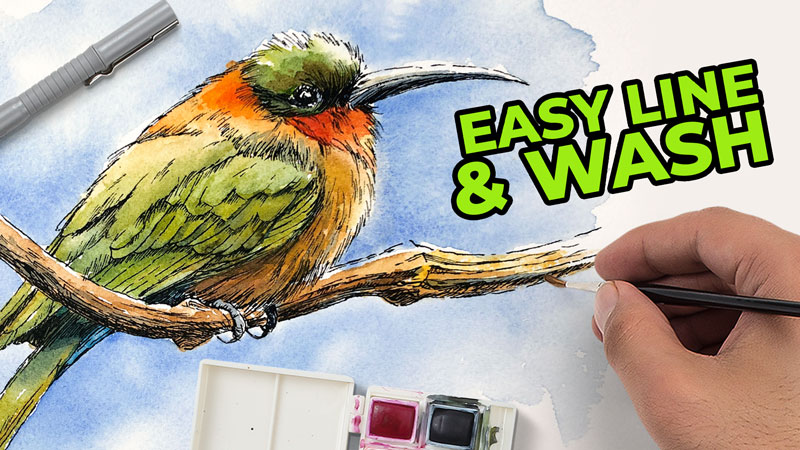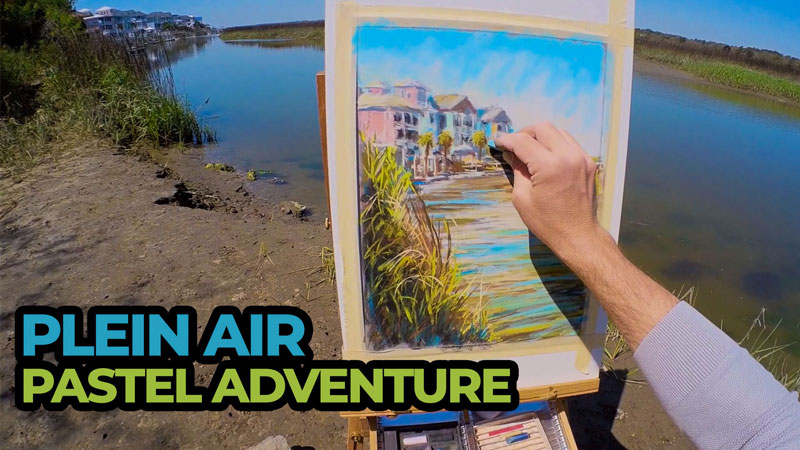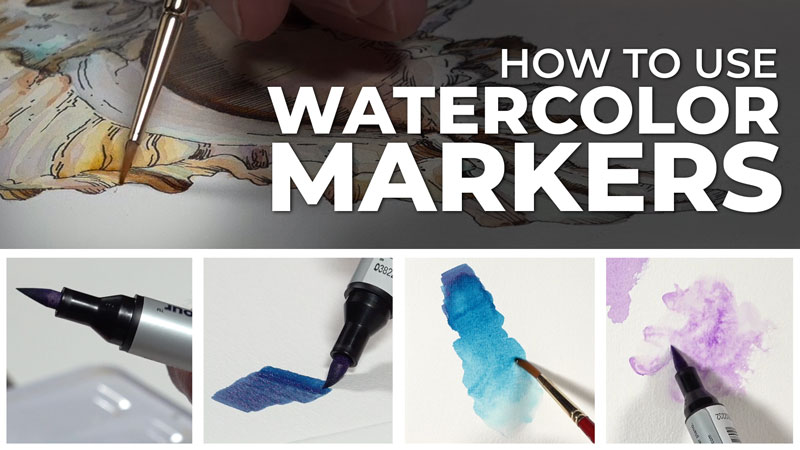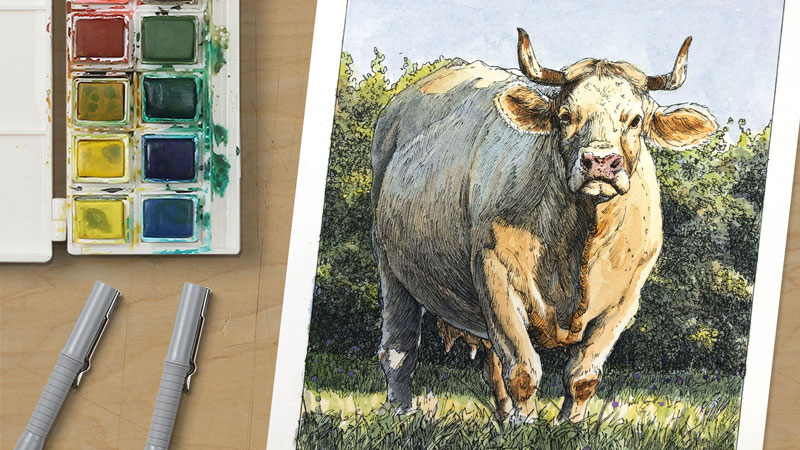Gettin’ Sketchy – Ladybug with Watercolor and Pen and Ink – Season 4 Episode 3
This episode aired live on YouTube on June 16, 2021.
In this timed drawing exercise, we spend 45 minutes creating a line and wash work of a ladybug. This one is a real challenge to complete in the allotted time due to the mediums used. Thankfully, the ladybug is fairly simple and easy to draw with basic shapes.
Here’s a look at the completed drawing…
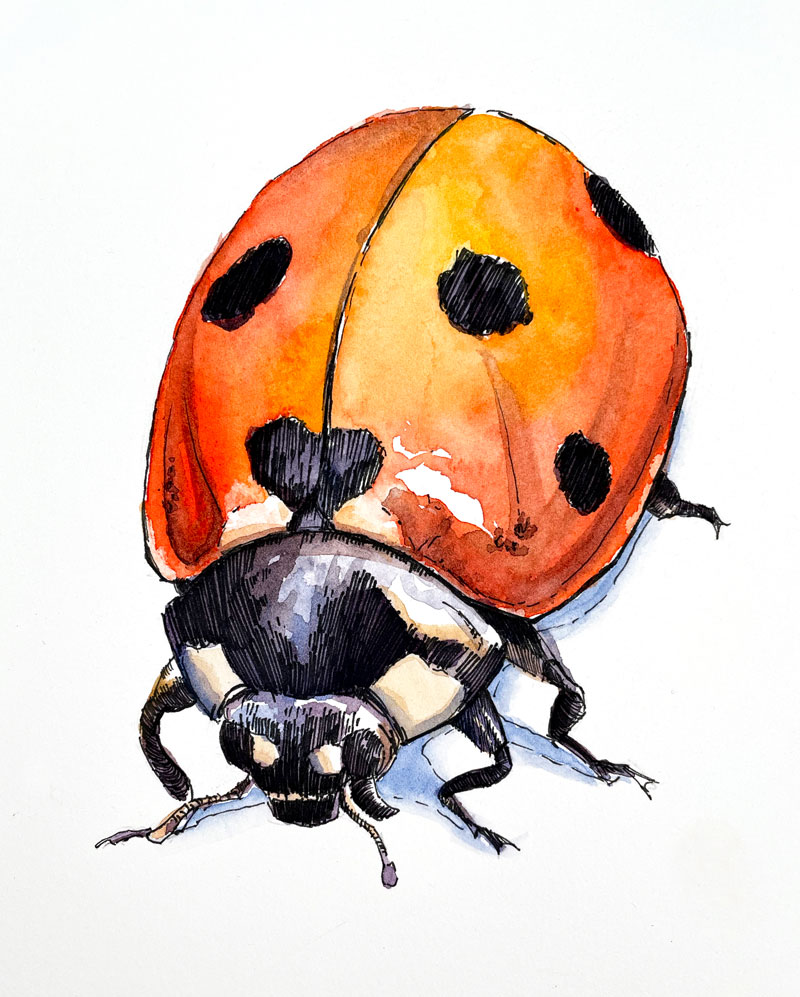
Line and Wash – Combining Pen and Ink with Watercolor
Certain combinations of art media work exceptionally well together. Pen and ink and watercolor is one such combination. This combination of media is often referred to as “line and wash”.
Combined mediums that work well with one another usually compliment each other. Often, one medium makes up for the weaknesses for the other.
Obviously, another factor to consider is the chemical and physical makeup of the two mediums combined. If the mediums do not “play well” together, then they will not work.
Pen and ink and watercolor “play well” together both physically and chemically. But they also make up for the weaknesses of the other, making this combination of media a popular choice for many artists – especially those interested in plein air activities like “urban sketching”.
Pen and ink is a rigid and often precise drawing medium. Typically, line is the vehicle for developing the drawing. Line is used to communicate the contours, or outlines, but also the values, textures, and form.
Through the methods of hatching and cross hatching, line can be used to create a gradation of value with pen and ink. However, this process is challenging and a true gradation of tone cannot be achieved using just line.
Watercolor, on the other hand, if fluid and loose. While it can be controlled, it’s at its best when it’s allowed to flow.
In a line and wash work, pen and ink and watercolor work together to create a complete piece. The pen and ink produces a rigid and precise drawing, while the watercolor brings color and smooth gradations of color and value.
The Order to Apply Pen and Ink with Watercolor
Pen and ink and watercolor can be applied in any order. Some artists prefer to apply the pen and ink first and follow with watercolor washes. Others prefer to apply the watercolor first and then refine the art with pen and ink.
The order in which the mediums are applied is less important than the balance between the two mediums. For example, a pen and ink drawing that is fully developed is likely to appear dark after watercolor washes are applied. To avoid this, the pen and ink drawing should be slightly underdeveloped so that the watercolor applications can be allowed to influence some of the values.
Materials for this Exercise
One appealing characteristic of line and wash is the cleanliness and compact nature of the medium. Drawing pens are inexpensive. Watercolor travels well and cleans up easily. Watercolor paper is also easy to find and is available in small travel “sketchbooks”. For this sketch, Staedtler drawing pens and Winsor and Newton watercolors are used on Canson Heritage 140 lb. hot press watercolor paper.
Cold press watercolor paper is completely acceptable for line and wash images. However, hot press papers provide a smooth surface which favors the pen and ink applications.
(The following links are affiliate links which means I make small commission if you purchase at no additional cost to you.)
- Staedtler Drawing Pens
- Winsor and Newton Travel Watercolor Set
- Canson Heritage 140 lb. Hot Press Watercolor Paper
Photo Reference
The reference image for this drawing exercise comes from Pixabay.com. The original image was edited. The image was cropped and the color was enhanced in Photoshop in order to bring out more reds.
Here’s a look at the photo reference…
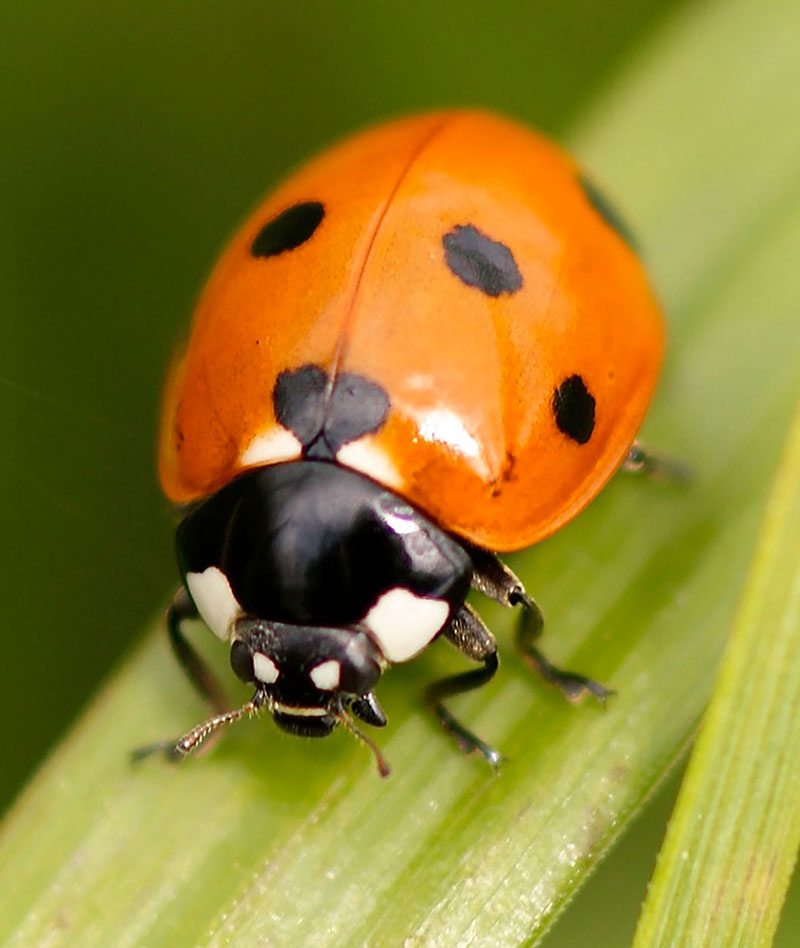
Ladybug with Watercolor and Pen and Ink Exercise – Conclusion
Line and wash is an excellent combination of media for both finished works and quick sketches. Pen and ink and watercolor work well with one another due to the fact that they compliment each other so well. The pen and ink provides the details, edges, and some of the value and texture while the watercolor provides the color and gradations of value and tone.
Keep in mind that the lesson presented here is an exercise. And just like with physical exercise that makes you stronger, any drawing exercise – even one that lasts only 45 minutes – will make you stronger as an artist. Practice is important and is a key part of developing your artistic skills.
If so, join over 36,000 others that receive our newsletter with new drawing and painting lessons. Plus, check out three of our course videos and ebooks for free.


